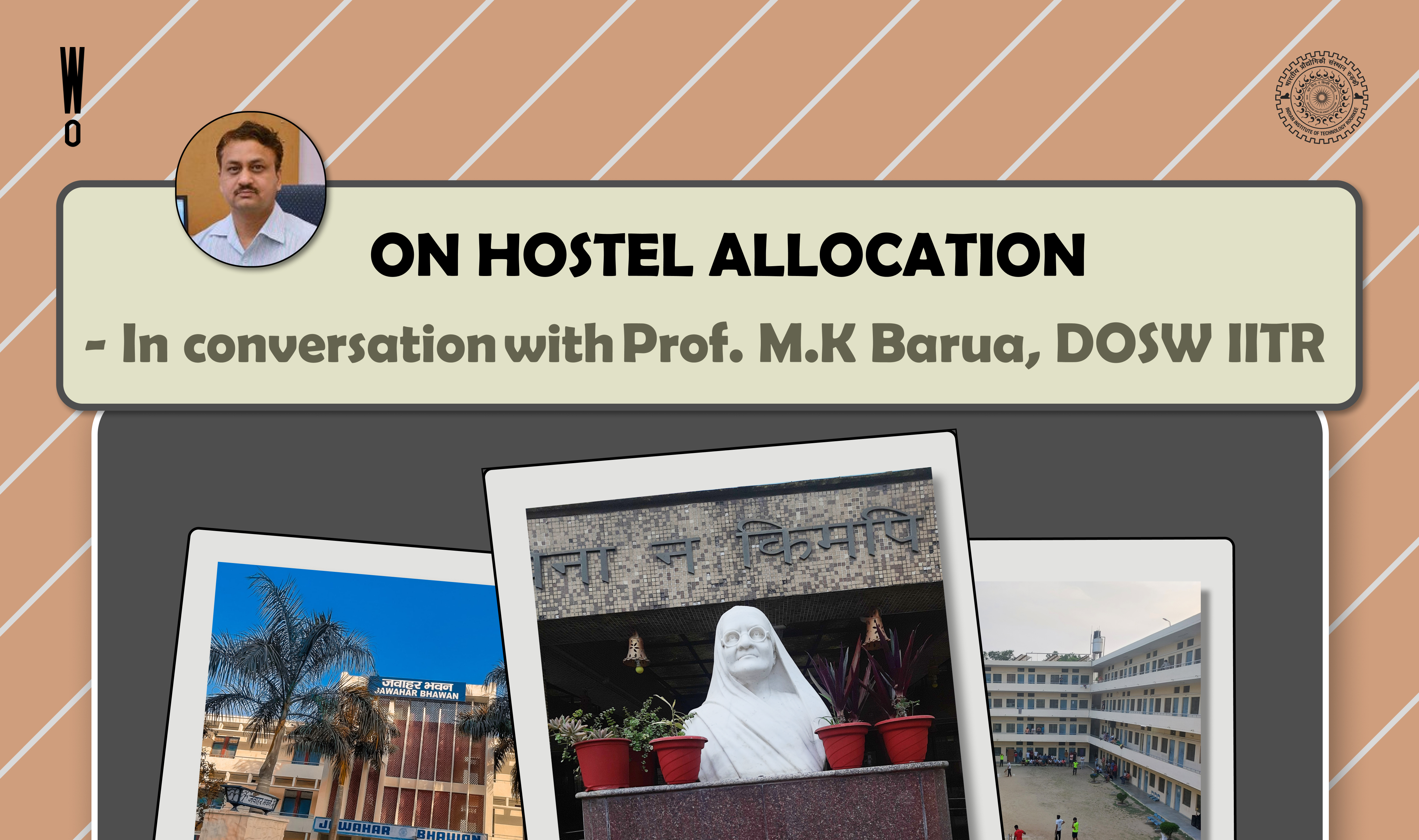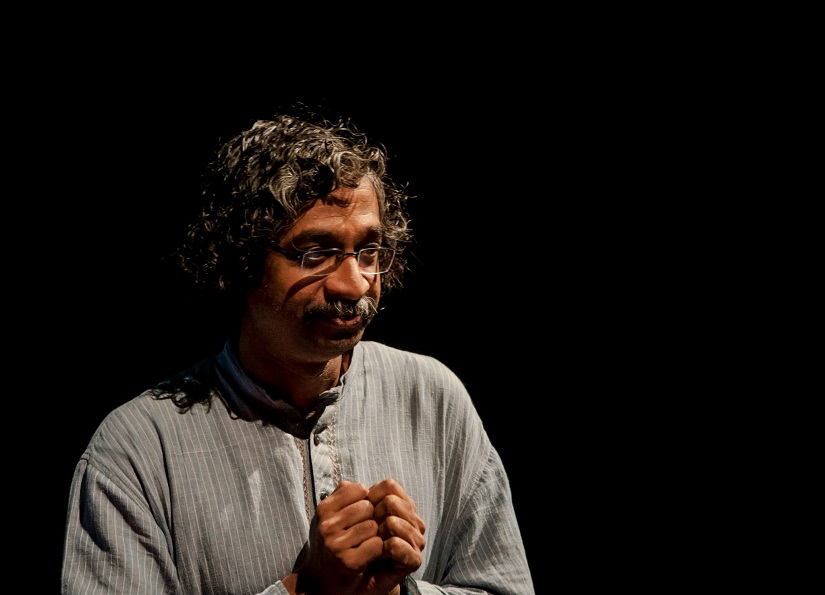

Body of IITR

Professor Arnab Bhattacharya is an accomplished physicist and researcher at the Tata Institute of Fundamental Research. He is well renowned for his social endeavors that tend to science outreach. On 23rd August, Prof. Arnab will deliver a lecture on the Periodic Table of Elements. Watch Out! decided to interview Prof. Arnab to converse about his research, his social outreach, his Institute Lecture and his time as an undergraduate at IITB.
Watch Out! : You completed your B. Tech. from IITB, then did your PhD from Wisconsin-Madison. How did you actually become interested in your current research work? Also, could you give us some insights regarding your topic of research (III-Nitride semiconductors) and talk about your experience with the same?
Prof. Arnab : Well, long story. I’ve meandered a long way before settling on what I wanted to do. I could have gone with the standard engineering branches like Electrical or Mechanical or Chemical etc after JEE, but I was fascinated by astronomy and astrophysics, so I finally took up Engineering Physics at IITB (Good decision in retrospect). Eventually I found what professional astrophysicists do a bit too mathematical (I suck at math) and disconnected from hands on stuff (like what one did in amateur astronomy). I slowly drifted towards microelectronics, as it was something i could relate to. During the pre-internet days there was no way of really knowing what one would find in grad school. I got a scholarship with the Physics Department at Wisconsin, but figured I didn’t like anything in physics as such, so I moved over to work on semiconductor lasers with people in Electrical Engineering. So, I have a Physics PhD certificate, working in an electrical engineering lab, and my mentor was a chemical engineer. Two important learnings - the fun stuff is happening at the intersection between traditional disciplines, and it really doesn’t matter what you do - a Ph.D. is an exercise in problem solving, you can apply that anywhere.
I had never worked on nitride semiconductors in grad school or as a postdoc. When I came back to India, initially I was keen to do the same semiconductor laser stuff I was familiar with. But these new materials were coming up and I decided I just HAD to get into it…. Thankfully I got enough support to set up the first GaN epitaxy lab in India. Then I’ve moved around a lot into different materials after that…
Watch Out! : You have been actively involved in the field of science outreach. Could you tell us what exactly science outreach is, and how you have been involved in it? Also, you pioneered “Chai and Why?”. What is this initiative? In what capacity can college students contribute in science outreach?
Prof. Arnab : Ok, again I might ramble, but let me try. In India, there is a worrying disconnect between science and society. The role of curiosity-driven, basic research such as that done at research institutes like mine, (TIFR) is rarely appreciated. Unfortunately, the scientific community, though mainly publicly funded, hardly engages adequately with the public, with outreach being a public relations exercise rather than a platform for discussion. Even for members of the general public with an interest in science, there is no forum to interact with scientists and ask questions. “Science” is that difficult, boring but unfortunately compulsory school subject, where one memorizes facts to answer questions in an exam. School education does not convey the spirit of enquiry in science, and fails to present it as a way of understanding the world around us. Not surprisingly, many students drop science after high school. Science is often thought to be elitist, with scientists in ivory-tower research institutions. Hence I really felt I needed to do something about this.
I thought of adapting the well-known “Café Scientifique” format, where scientists chat with the public in an informal environment, to make it relevant in Mumbai. The word science itself was a problem – anything with science is perceived as being “not-for-me” by the public. To make it user-friendly, I thought of the name “Chai and Why?”. I could luckily try this out (a six-month experiment!) at Mumbai’s popular theatre venue, Prithvi Theatre and “Chai and Why?” was born in January 2009. The public response was phenomenal, we immediately went to a twice-a-month format (at a second mid-month venue) and in 2015 started an occasional 3rd venue. We’re still running without a break, now in year 11 with over 270+ successful sessions!
Watch Out! : IUPAC has declared 2019 as the International Year of The Periodic Table. Why is this so significant?
Prof. Arnab : Short answer this time. Every culture throughout history has been keen to know what the world around them was made up of. From ‘Earth, Water, Air, FIre’, we’ve now gone to 118 elements in the periodic table. The Periodic Table is not just an icon of chemistry, it is an icon of science as a whole, so it is good we get to celebrate the journey that has led us here. (150 years since Mendeleev, completion of the 7th period elements etc.)
Watch Out! : What topics are you going to touch upon during your talk at IITR?
Prof. Arnab : Two things - that there is no unique periodic table, and that the Periodic Table is universal - we find the same elements everywhere in the universe. So lots of “ChemHistory” stories with lots of Astronomy as well.
Watch Out! : Moving away from academics for a bit, what’s a crazy college story you’d like to tell us?
Prof. Arnab : Most of the stuff will probably be censored…. My time at IITB was wilder than things are now.
Let’s see. I’ve done way too much “keeda” in IITB lingo - from convincing professors to let us go watch the sunset right in the middle of an end-sem exam, to stealing beds from other hostels (we had a large corner room in the hostel that was the unofficial “adda” for mugging or partying, but you couldn’t have 2 beds in your room - however that rule was applicable only for your own hostel inventory), to arranging booby trapped doors to dunk people in water…..
Watch Out! : We would like to know about your experience at TIFR, and the different opportunities it provides to students interested in research.
Prof. Arnab : TIFR works on everything from Astronomy to Zoology, literally A-Z, and there are world class labs working on cutting edge problems. It is a very different environment than almost any other similar national lab in India, for the historical ethos that pervades it, right from our fantastic art collection that greets you when you enter, to the most inspiring seashore.